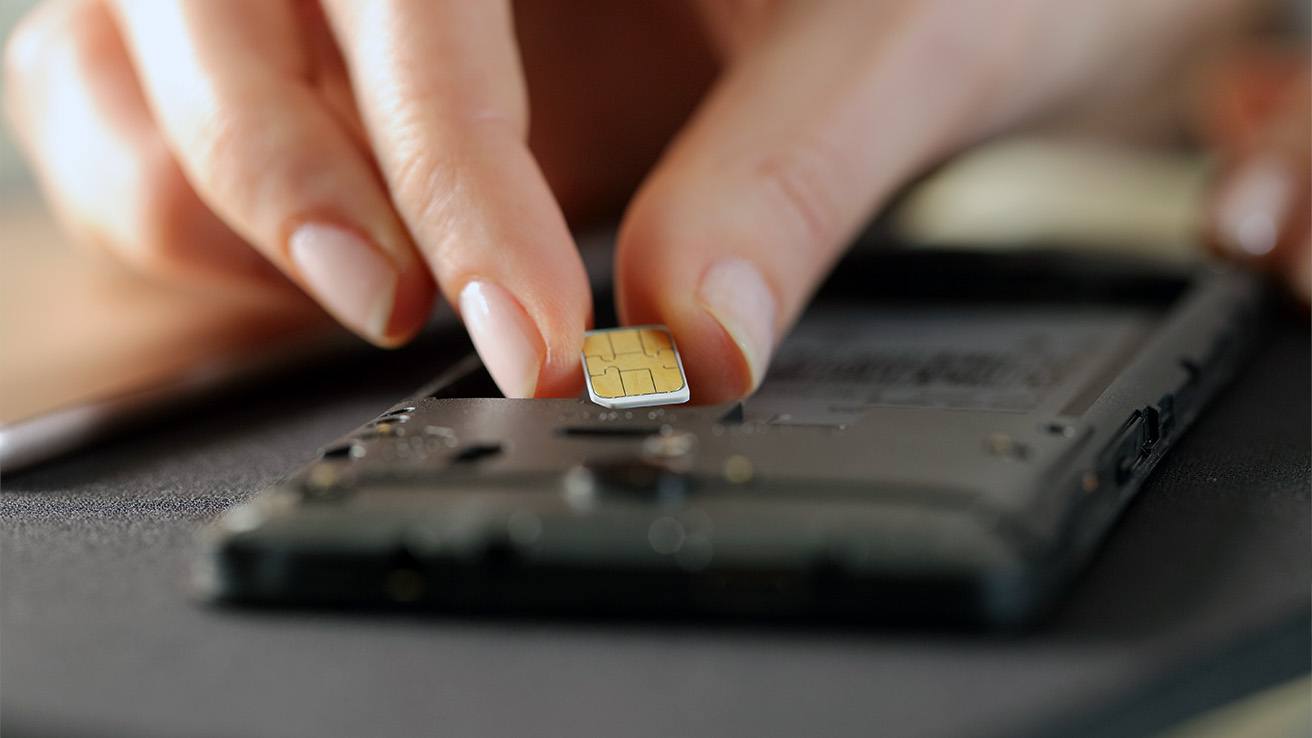Fraud SIM Swap - How banks can identify fraud risk and protect customers
What effective ways can banks identify when a customer’s mobile number has been fraudulently sim swapped and ported onto a new device.

Contents
SIM swap fraud is on the rise. Reports claim that the type of fraud has increased by a massive 400% in the past five years. Otherwise known as SIMjacking - it’s where scammers intercept one-time passwords used for two-factor authentication to gain access to customer accounts to steal money, cryptocurrencies, and identities.
While victims of the fraud are at risk of having their accounts drained and losing control of their social media profiles, the harm to service providers who fail to recognize the warning signs and protect their customers range from damage to brand reputation and customer trust to liability for lost funds.
What is SIM swapping?
SIM swapping is a type of phishing fraud that poses a serious threat to customer and bank security. The fraudster obtains an individual’s banking details through phishing techniques or by purchasing these from organized crime networks. They then use this information, including personal details sourced via social media, to pose as the victim to the mobile network operator and fool them into canceling and reactivating the victim's mobile number to a SIM in their possession. As a result, all calls and texts to the victim’s number are routed to the fraudster’s phone, including one-time passwords for banking transactions. After receiving a one-time pin or password from a bank, the fraudster can then potentially access the customer’s bank account and transfer funds.
Why is SIM swap on the rise?
Despite advances in software technology, human intervention is still required to prevent SIM swap fraud which is quite difficult to detect. Also, controls and processes by network operators have to a degree failed and led to instances of human error in retail branches in distributing SIM cards. Banks are still trying to find effective ways of identifying when a customer’s mobile number has been fraudulently swapped and ported onto a new device. With fraudsters continuing to exploit this weakness, putting better authentication processes in place is vital. The Financial Ombudsmen Service (FOS) has also looked to put more responsibility on banks to compensate customers, taking into account the evolution and sophistication of SIM swap fraud.
What are the risks to customers?
Anyone who uses banking services or notifications with a one-time Pin (OTP) is potentially at risk. Customers make themselves particularly vulnerable by answering fraudulent calls or illegitimate emails which ask for personal details. It’s about being vigilant and responsible for protecting your personal data. Given that fraudsters are using personal details sourced from social media, customers need to be applying the necessary privacy settings on their profiles to stop criminals from snooping.
How should companies help tackle SIM swap fraud?
1. Stringent guidelines and processes
Customer service and fraud operations teams in banks and Mobile Network Operators arguably need tighter processes and guidelines on how to prevent sim swapping and detection on potentially fraudulent activity. Banks should be implementing SIM Swap checks on all services that generate an OTP to authorize transactions.
On inbound automated IVR systems, positive SIM swap fraud checks should raise and notify the threat level, with more ID&V controls implemented, or handover instigated to well-trained contact center agents. Mobile Network Operators and banks can look at specific training to help agents and high street shop staff to recognize when someone might be impersonating a customer and stop them in their tracks.

2. Understanding consumer behavioral patterns
Banks need to be making better use of the data they have available to them, including SIM card information, device type and location data, and consumer behavior. Risk can be significantly reduced by tracking these patterns better. Of course consumers have a responsibility to be vigilant and take their own precautions as well to help prevent SIM swap fraud.
In addition to costing companies money, SIM swap fraud poses a significant risk to a company’s reputation and customer base. If the necessary prevention measures are put in place from the beginning, banks and phone providers could prevent real reputational damage and the loss of crucial resources, time, and money.
If the bank identifies a data mismatch, fraud prevention solutions produce a risk score, determining the level of threat and what actions need to be taken.
How can banks get access to customers' mobile data without putting those customers at risk?
While the customer’s mobile data is owned by the mobile operators, it can still be made available to banks. Mobile operators need to work closely with banks and the banks can work with customer engagement specialists to build better practices and implement better solutions to combat SIM swap fraud. This has in the past involved making historical customer data available for lookup by a bank’s fraud prevention solution that can then analyze the data to assess the risk of fraud. However Real-time checks are now becoming available across all networks which reduces the need for historical data.
Block the fraudsters and notify customers automatically
If the bank identifies a data mismatch, fraud prevention solutions produce a risk score, determining the level of threat and what actions need to be taken. For example, if mismatches in SIM swap data highlight a low or moderate threat of SIM swap fraud, the bank can determine through workflows what actions will be taken in the situation, whether the one-time password is delivered or denied, or further verification is required. If mismatches indicate that a SIM swap fraud has occurred, the prevention technology alerts the bank immediately and access is denied to the fraudster. Trigger-based communications as part of the banks communications platform workflow are also sent to the fraudster and victim notifying them that the scam has been detected.

Banks can use SIM swap fraud prevention software to analyze customers’ historical mobile network data and help them to verify the authenticity of transactions and communications. Get the SIM swap fraud detection solution sheet to find out more.
How can banks and mobile operators adapt their authentication processes?
Banks and mobile operators can do several things to improve their authentication processes and prevent more of these incidents from occurring. Given that criminals on occasion have been able to bypass these companies’ security measures, banks and phone providers should be, and in some cases are, investing in security technology. They should also be putting in place extra security questions that cannot be answered by simply knowing a few personal details sourced from social media.
In addition, contact centres and customer service teams have a responsibility to put adequate training and system alerts in place to help agents better identify potentially fraudulent activity. Fraud cases can also be reduced by driving awareness of this growing threat and creating guidelines to help customers protect themselves. The challenge though is that fraudsters will always innovate so the prevention measures need to be in place from the onset. Ultimately, banks need to utilize the customer data generated by mobile networks and devices to identify risk before a customer loses their money.
If you would like to find out more about Webex's CPaaS market-leading banking fraud management technology and solutions, please contact us today for a consultation or download our SIM Swap solution PDF to find out more on how to protect against SIM swap fraud.



